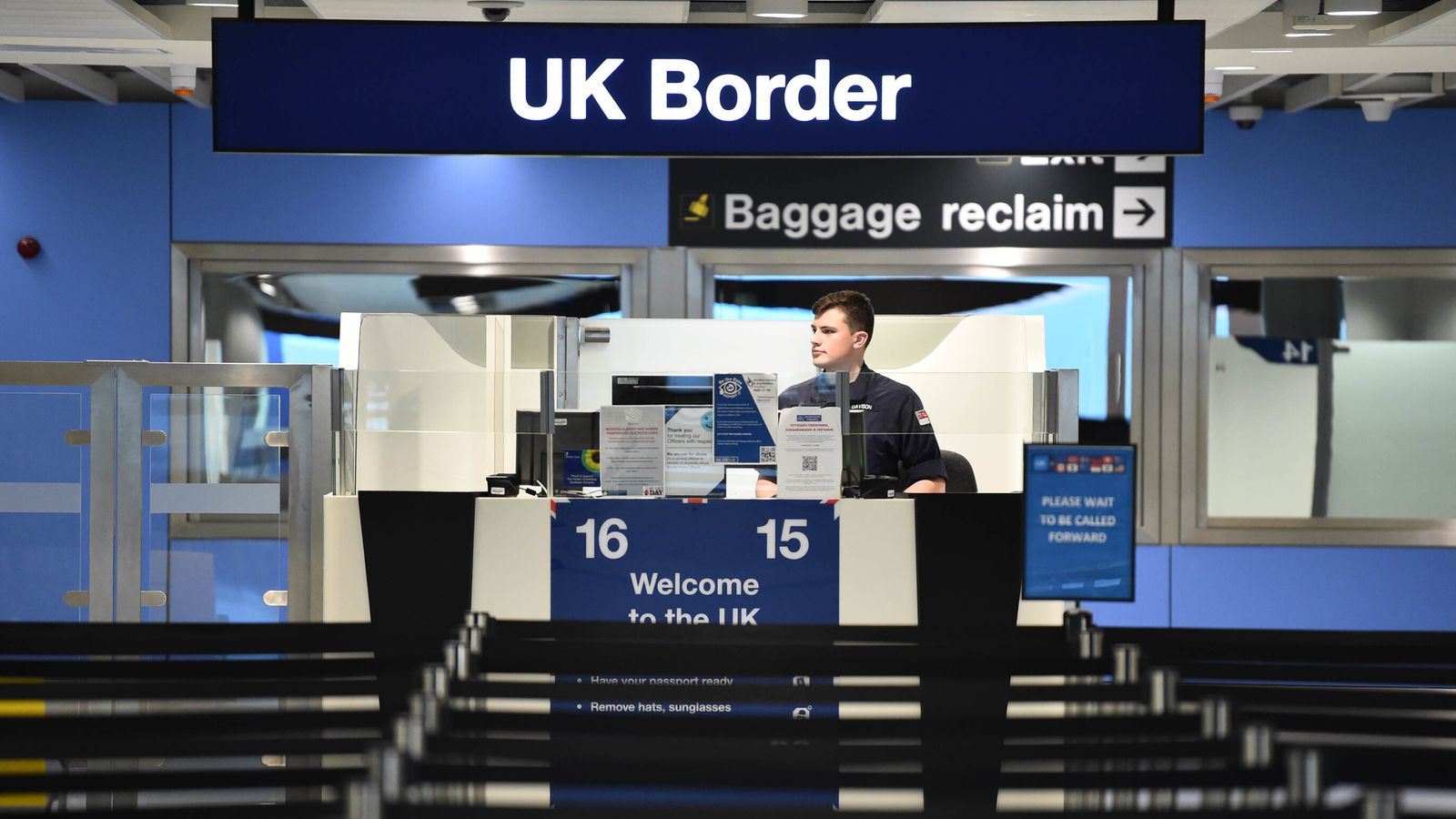
Russia has a “pretty good map” of Britain’s crucial network of undersea cables, experts have warned – potentially presenting Vladimir Putin with a “vulnerable soft underbelly” to attack.
While separated by 21 miles of water, a web of cables and pipelines nonetheless connects the UK and Europe.
These lines carry critical civilian and military communications, electricity and gas – things that underpin the fabric of our society.
But it’s hard to constantly keep an eye on hundreds of miles of subsea cables, leaving them vulnerable to sabotage.
After damage to undersea cables in the Red Sea caused internet disruption in Asia and the Middle East, Sky News looks at what subsea cables are and what damage to one or more of them – accidental or otherwise – could mean for the UK.
A Russian ‘spy’ ship in English waters
When the Yantar research vessel sailed through the English Channel earlier this year, she was followed closely by HMS Somerset.
At first glance, it might be odd for a Royal Navy warship to be asked to shadow a civilian boat. But Britain doesn’t believe the Yantar is a civilian vessel, it believes it is used for Russian surveillance.
Defence Secretary John Healey spelled it out in parliament, saying: “Let me be clear, this is a Russian spy ship used for gathering intelligence and mapping the UK’s critical underwater infrastructure.”
The Yantar complied with international rules of navigation, Mr Healey said. But this was not the first time it had been detected near Britain’s subsea installations, he added.
What are undersea cables?
There are around 60 sets of undersea cables branching out from the UK, Dr Sidharth Kaushal, an expert in maritime technology, told Sky News.
They are fairly wide, he says, and usually encased in a metal sheath. Closer to shore, they are often buried under concrete to further protect them. There are also pipelines which carry gas from the continent.
Some cables are in relatively shallow waters and are relatively easy to repair – they are often damaged unintentionally by commercial activity – while others are in deeper waters and require specialist equipment to fix if a problem arises.
A recent report from the IISS thinktank (the International Institute for Strategic Studies) highlighted the extent to which the European and global economies relies on them.
“Cables transmit around 95% of global data flows and underpin an estimated $10trn in financial transactions every day,” it said.
Making a map?
Experts believe Russia has spent recent years covertly mapping undersea cables in the West – some of which are military and whose locations are not public knowledge.
“We have seen an uptick in activity of Russian surveillance,” said RUSI thinktank expert Dr Kaushal.
Surface vessels have been gathering intelligence, but there have also been reports of Russian uncrewed submersibles being operated near undersea cables, he added.
“Given that this has been a persistent activity in an area on which they have placed some importance for quite some time… one would expect they have a pretty good map.”
Read more:
Russia’s ‘hybrid attacks’ against NATO ‘look like war’
Drones and salami: How Putin is testing the West
What does sabotage look like?
Severing undersea cables can have a detrimental impact on the countries they serve.
“There’s quite a bit of redundancy in the cable networks running across the Atlantic and indeed the cable networks that service the UK,” Dr Kaushal said. “It certainly would not be very easy to sabotage cables… in a way that would be impactful.”
While it might be easy for a hostile state to deny cutting one or two cables, a systematic effort to affect the UK by cutting enough to have an impact would be harder to disavow, he added.
This is particularly the case with cables that are in deeper water, reachable only by a handful of states.
Recent disruption to undersea cables has been blamed on “anchor-dragging by Russia’s shadow fleet”, the IISS said in its report.
In December, Finland seized the Eagle S oil ship which had been carrying Russian oil and was suspected of damaging the Estlink 2 undersea power cable in the Baltic Sea by dragging its anchor across it.
Russia has previously denied damaging undersea infrastructure.
Does the UK need to prepare?
Faced with an increasingly fraught international picture as the war in Ukraine grinds on, the UK parliament’s National Security Strategy committee launched an inquiry into undersea cables earlier this year.
It is examining how well the UK is able to defend its undersea infrastructure – and how resilient the nation would be in the event of a major, protracted disruption to our internet connection.
“Our internet cable network looks like an increasingly vulnerable soft underbelly,” chairman Matt Western MP said as the inquiry began.
“There is no need for panic – we have a good degree of resilience, and awareness of the challenge is growing. But we must be clear-eyed about the risks and consequences: an attack of this nature would hit us hard.”
Dr Kaushal argued that while there is a degree of redundancy in the undersea cables that serve the UK, the pipelines that bring gas to British homes are perhaps more vulnerable.
“I think in some ways the pipeline network is far more fragile because there we are more reliant on a handful of critical pipelines,” he said.
















